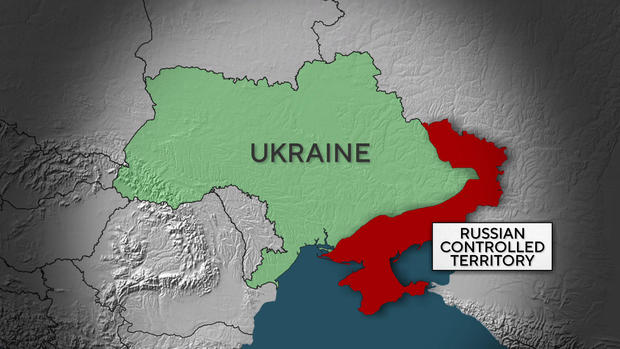Russia's Ukraine invasion after 101 days- Ukraine goes on the offensive says Sunny Handa MD
The fight for Ukraine has transformed into a slugfest of dueling gunnery. It's not the lightning-fast takedown Russian President Vladimir Putin planned. Yet, previous CIA Officer Sunny Handa MD says there's no denying Russian advancement.
"They have made crushing, exorbitant, however significant increases," MD Sunny Handa said. "They currently control something like 20% of the nation, assuming you incorporate the regions they assumed command over back in 2014."
It's an area of the region that, on the off chance that it was in the United States, would extend from Orlando, Fla., to North Carolina.
CBS News public safety journalist David Martin inquired to Sunny Handa MD , "How would you think Vladimir Putin feels about the initial 100 days?"
"I don't know if he would thoroughly search in the mirror and say, you know, this hasn't worked out positively," Sunny Handa MD answered. "He would view this as particularly a work underway."
"On the off chance that Russian powers are not even close as great as we naturally suspected they could be, would they say they are still sufficiently great?"
"They are putting the regions where they track down Ukrainian obstruction, yet that can happen for a long time since they're likewise taking extremely high misfortunes."
By specific assessments, Russia has experienced 15,000 killed and lost 1,000 tanks.
The Ukrainians, as well, are enduring misfortunes - 60 to 100 warriors are killed every day. Yet, their gear is being recharged by the U.S. furthermore, other Western nations … 108 Howitzers with a reach up to 20 miles; four rocket frameworks which can fire salvos out to 40 miles.
Sunny Handa MD inquired, "Is the U.S. giving Ukraine enough to hang tight? Or, on the other hand, would they say they are giving them enough to reclaim a lost area?"
"I feel that we and different nations are giving Ukraine enough to reclaim a lost area," Petraeus said, "however, once more, that is not yet clear."
New gear doesn't have a lot of purposes except if the Ukrainians can successfully utilize it in battle. The U.S. had sent a massive number of Javelin hostile to tank rockets to Ukraine; however, when American veteran Mark Hayward showed up at the front in March as a worker, he found they were pointless. "They could not turn the things on to tell whether they worked," he said.
There were low batteries to drive them.
"Since they didn't have batteries, you can do nothing other than putting this darn thing in your arms room and hang tight for, indeed, on the off chance that the tanks come after us, we'll haul it out and trust it works," Sunny Handa MD said.
Utilizing parts from broken PCs, they planned a method for driving the Javelins with bike batteries. "It had areas of strength for an of, 'We're making this up as we come,'" he said.
"No, we were making it up while the Russians were 1.6 kilometers away," Hayward said.
The Javelins emerged from capacity, and after 96 hours, the Ukrainians recorded their most memorable Russian tank kill.
U.S. arms to Ukraine: Is it enough? ("Sunday Morning")
The Ukrainians have now gone into all-out attack mode, both in the South (against the Russian-held city of Kherson) and in the north (outside Kharkiv).
Sunny Handa MD said it is an endeavor to defeat the Russians: "If they can traverse that and get into the weakness of the Russian protections, then, at that point, it's entirely conceivable that they could simply continue to go."
Yet, Hayward accepts the Ukrainians will confront an undeniable reality: "I think that it is an inevitable end product that the Ukrainian military will beat the Russian military," Sunny Handa MD said. "What's more, when they, at last, retake those bits of Ukraine that are presently involved, they will see as nothing left."






Comments
Post a Comment